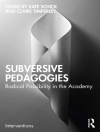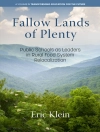Do what you do best and let technology do the rest
Technology has transformed our lives. Virtually every school and classroom is connected. Why then, has it not transformed education? Consider these five ways educators can begin to optimize classroom technology and rethink its use.
- See technology as a complement rather than a replacement
- Embrace its creation potential over consumption function
- Encourage design and personalized learning over standards and outcomes
- Celebrate the journey toward digital competence over curriculum improvement
- Focus on tech-pedagogy over product usage
Learn how to let technology cultivate student autonomy, creativity, and responsibility while focusing on lessons that hone higher-order and critical thinking skills.
’Dr. Zhao continues to push educators’ thinking by taking a serious examination of the role technology has played in education. The struggles he lays out are challenges educators try to overcome on an almost daily bases. The new thinking in this book needs to be read by those in the classroom and leaders alike.’
Steven W. Anderson, Author
Content Curation: How to Avoid Information Overload, @web20classroom
This book masterfully address the issues related to technology integration in schools. Dr. Zhao artfully navigates through the misconception of technology as the ultimate solution to the challenges of teaching.
Jared Covili, Author of Going Google and Classroom in the Cloud
Innehållsförteckning
Acknowledgments
About the Authors
Introduction
1. The Wrong Relationship Between Technology and Teachers: Complementing in an Ecosystem Versus Replacing in a Hierarchy
An Ecosystem, Not a Hierarchy: Reconsidering the Relationship Between Teachers and Technology
Technology and Teachers in a Learning Ecosystem: What Are Their Niches?
Constructing a Learning Ecosystem: What Does It Look Like?
2. The Wrong Application: Technology as Tools for Consumption Versus Tools for Creating and Producing
The First Approach: Technology as a Tool for Consumption
Constructivism: Constructing by Creating and Producing
Wikipedia: A Mass Project of Creating and Making
Digital Stories, Twitters, Blogs, Videos, and Robots: New Genres of Creating and Making
Diverse Needs as Creators and Makers
3. The Wrong Expectation: Technology to Raise Test Scores Versus Technology to Provide Better Education
Can Technology Boost Test Scores? Don’t Let the Wrong Question Guide Our Technology Use
Providing Better Education: The Real Value of Educational Technology
4. The Wrong Assumptions: Technology as Curriculum Versus Digital Competence
The Wrong Assumptions: Technology as Curriculum/Instruction
What Is Digital Citizenship?
Developing Digital Citizenship Through the Use of Digital Technology
5. The Wrong Technology Implementation: Top Down Versus Bottom Up
Two Technology Paradoxes
Before 3 p.m. Model
After 3 p.m. Model
Before 3 p.m. Versus After 3 p.m.: What Are the Differences?
Alternative Ways to Implement Technology
Conclusion
6. Making It Right: Reimagining Education in the Second Machine Age
The Need for Reimagining Education
Reimagining the What: Curriculum
Reimagining the How: Pedagogy
Reimagine the Teacher-Machine Relationship: Summary
Index
Om författaren
Jing Lei is an Associate Professor in the School of Education at Syracuse University. Dr. Lei’s scholarship focuses on how information and communication technology can help prepare a new generation of citizens for a globalizing and digitizing world. Specifically, her research interests include technology integration in schools, the social-cultural and psychological impact of technology, e-learning, emerging technologies for education, and teacher technology preparation. Her recent publications include Handbook of Asian Education: A Cultural Perspective (2011, Routledge) and The Digital Pencil: One-to-One Computing for Children (2008, Lawrence Erlbaum Associates publishers).












